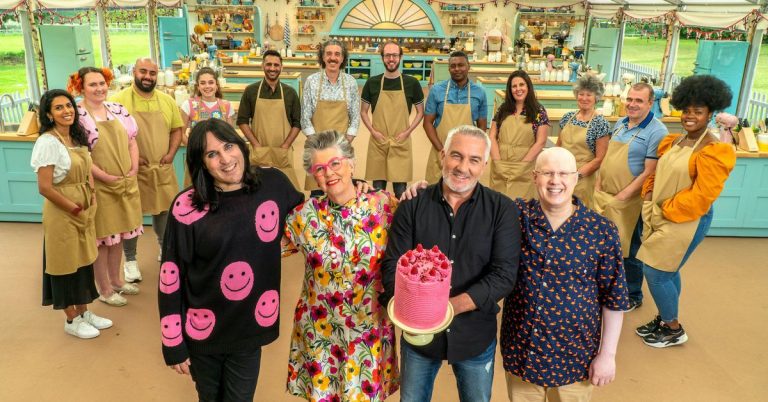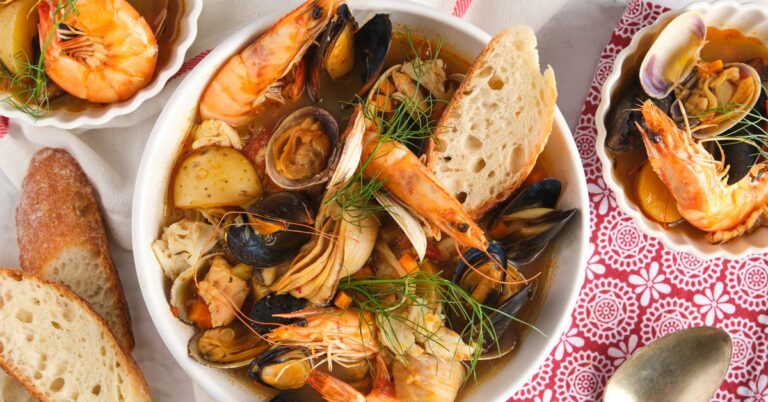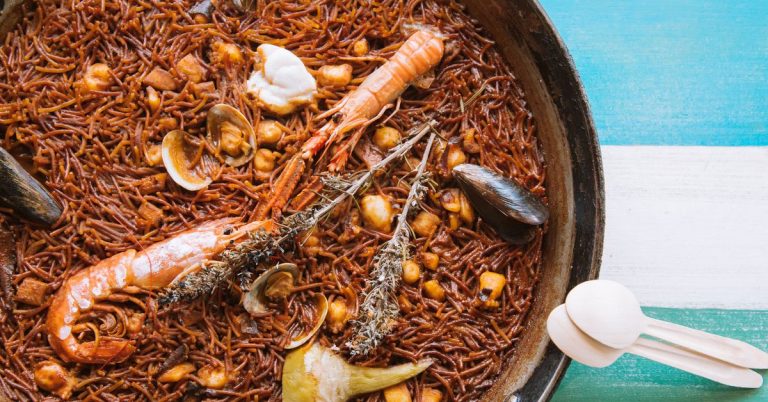The Ultimate Guide to Buying Aperitifs
Humans are creatures of habit, and that’s especially true when it comes to our drinking rituals. We drink coffee for its ability to wake us up, herbal tea for relaxation, and wine to pair with food. But to stimulate the appetite before a meal, there’s one drink category most Americans tend to forget about: the aperitif.
The aperitif — a word derived from the Latin verb “aperire,” meaning “to open” — is a category of low-ABV beverages defined by when they’re consumed rather than how they’re produced. An aperitif can be a liqueur, fortified or aromatized wine (e.g., sherry or vermouth, respectively), or an aperitivo bitter (e.g., Aperol or Campari), making the category diverse and approachable for both bon vivants and novice drinks alike.
While the mindful and ritualistic consumption of aperitifs is slowly catching on in the U.S., in Europe, especially Italy, France, and Spain, aperitifs have been at the center of late afternoon and evening drinking rituals for decades — and, in some cases, centuries.
In Italy, aperitifs are consumed during the pre-dinner aperitivo hour — a time when family and friends gather to enjoy low-ABV tipples along with small bites (cicchetti, in Italian) to unwind from the day. In France, they practice apéro (short for apéritif) with French tipples such as pastis and Pineau des Charentes. And in Spain, sherries and vermut (vermouth) whet the appetite during “el aperitivo,” with new vermuterias, or vermouth bars, experiencing a renaissance among millennial drinkers.
Although a culturally ingrained drinking occasion such as aperitivo hour has not yet gained a permanent foothold in the U.S., interest in low/no-ABV drinks is expanding. The segment grew by 30 percent in 2020, and became a nearly $10 billion industry in 2021. As a result, the Aperol spritz has become as ubiquitous as the vodka soda in most major cities around the country; new sober bars and bars that strictly serve low-ABV aperitif-style cocktails are popping up; and a new wave of aperitifs is flooding the market at an unprecedented pace.
To kickstart your personal aperitivo hour practice, I’ve scoured the world of aperitifs to put together a list of some of the hottest bottlings from both domestic and international producers, broken down by flavor characteristics. Whether you’re a hardcore spritzer looking for an alternative to Aperol, a G&T lover open to trying a low-ABV botanical spirit to replace the gin, or a bon vivant who is just looking for the next hot low-ABV product, there’s a must-try aperitif for everyone.
Bittersweet
If you’re a fan of Aperol, then bittersweet aperitifs should pique your interest. These aperitifs typically come in the form of Italian-style aperitivo bitters, a category defined by bright red and orange hues and low-alcohol content. They’re often made with a curated blend of citrus peels, herbs, spices, roots, barks, and other botanicals, making for a balanced beverage that’s begging to be mixed in a spritz.
Don Ciccio & Figli Ambrosia Aperitivo
:no_upscale()/cdn.vox-cdn.com/uploads/chorus_asset/file/23298069/EA_126_Shopping_Guide_Aperitifs_Don_Ciccio___Figli_Ambrosia_Aperitivo19964.jpg)
This craft aperitivo bitter produced by Don Ciccio & Figli in Washington, D.C. — a liqueur brand owned by an Amalfi-born Italian — is an all-around crowd-pleaser. Imagine Aperol, but full-bodied, juicier, and with complex vegetal undertones — this is Ambrosia.
The sunset-hued liquid gets its color from cantaloupe and blood orange paired with turmeric and carrot, which add a tannic structure and tames the sweetness. It’s perfectly balanced and great for sipping on its own over ice, but in a spritz is where it really shines.
Select Aperitivo
:no_upscale()/cdn.vox-cdn.com/uploads/chorus_asset/file/23298366/EA_126_Shopping_Guide_Aperitifs_Select_Aperitivo19977.jpg)
The Pilla brothers, a duo who were eager to contribute to the rejuvenation of postwar Venice, created Select in 1920, but the brand’s growth stalled during WWII. Today, after a 2018 rebrand that gave the ruby-red aperitivo new life, Select is recementing its place in Venetian spritz culture, slowly giving Aperol a run for its money.
Select’s complex spice and bitter citrus profile makes it a worthy alternative to Campari in a Negroni, but its versatility has led to it becoming a cult-favorite among both bartenders and spritz-lovers. The bittersweet liqueur is crafted with 30 botanicals, only two of which are publicly confirmed by the brand: rhubarb root and juniper. While it’s delightful to sip on its own, it’s best in a Venetian spritz — the brand’s signature, which is a mix of Select, prosecco (some prefer white wine), and soda water, garnished with the cocktail’s trademark green olive.
Sirene Aperitivo Rosso
:no_upscale()/cdn.vox-cdn.com/uploads/chorus_asset/file/23298120/EA_126_Shopping_Guide_Aperitifs_Sirene_Aperitivo_Rosso19970.jpg)
Technically, this bottling could fall into the aromatized wine section, as it’s made with a blended white wine base from Italy’s Lake Garda area, but due to its red color and bitter profile, Sirene Aperitivo Rosso makes the cut as a proper vino aperitivo.
Developed by Italian sommelier Elisa Carta, the creator of the newly released Liquore delle Sirene collection of bittersweet aperitifs, the Aperitivo Rosso uses all natural ingredients for both its coloring and flavor. While some brands use artificial red coloring to dye their aperitivo bitters, mostly for consistency and to prevent fading, Sirene Aperitivo Rosso uses extracts from red potato skins, hibiscus, and monarda flowers. It also mixes in rose, sweet orange, and red pepper, making this liquid both floral and vegetal with an invigorating juiciness that’s perfect for sipping on ice, or with a splash of soda or tonic water.
Savoia Aperitivo (release Spring 2022)
If you’ve had the pleasure of tasting the award-winning amaro Italicus rosolio di bergamotto, then this soon-to-be-released vino aperitivo by the brand’s founder Giuseppe Gallo should tell you everything you need to know about the quality of the liquid in the bottle (spoiler: it’s delicious).
Having made its U.K. debut in fall 2021, Savoia Aperitivo has already started making noise as one of the most exciting aperitifs and product releases of the year. Named after the Italian Royal House of Savoia, the recipe is inspired by a formula dating back to the late 1890s called Bitter di Milano. It’s made with a blend of trebbiano and a 14-month oak-aged DOC Marsala Fine wine; this base is then aromatized with botanicals such as aloe, rhubarb, quassia wood, mandarin, pink grapefruit, bergamot, cardamom, and ginger. It’s an exquisite aperitivo that’s going to take the U.S. by storm this spring, and can be served chilled and neat, on ice, or in a spritz.
Refreshing and botanical-driven
The bulk of the innovative aperitifs that have entered the market in the last few years falls into this category, with producers reinventing the wheel with citrus-forward, botanical-driven bottlings. Here are just a few examples of this exciting style.
Le Moné
:no_upscale()/cdn.vox-cdn.com/uploads/chorus_asset/file/23298376/EA_126_Shopping_Guide_Aperitifs_Le_Mone_19952.jpg)
Le Moné is a new wine-based Meyer lemon aperitif made in Hammondsport, New York, the brainchild of three beverage industry professionals, including a sommelier and brewmaster.
The aperitif is made with a base of acidic citrus-forward wine from the Finger Lakes region that is blended with a Meyer lemon distillate, fortified with an unaged grape brandy, and finished with organic agave sweetener to balance the dry, citrusy profile of this vibrant liqueur. It’s a true workhorse, as it pairs well with vodka, tequila, or gin in a range of cocktails, from margaritas to martinis; but Le Moné is probably best served in an effervescent spritz, or on ice before a meal to cleanse the palate. It’s currently available in 10 states, with plans to expand in the not-too-distant future.
Escubac Botanical Spirit
:no_upscale()/cdn.vox-cdn.com/uploads/chorus_asset/file/23298077/EA_126_Shopping_Guide_Aperitifs_Escubac_Botanical_Spirit_19989.jpg)
Escubac is a modern French botanical liqueur launched in 2020 that falls somewhere between a juniper-less gin and spice-forward aquavit. According to the brand’s website, the aperitif is inspired by an old Tudor recipe found for an elixir called Royal Usquebaugh, which originated in England but was later adopted by the French, who renamed it escubac.
To produce this flavorful liquid, 14 botanicals including caraway, cardamom, nutmeg, cinnamon, and citrus are macerated in neutral spirit for 72 hours before that infusion is slowly distilled in a custom pot still, which creates spirits in batches as opposed to continuous distillation, making it more expensive to produce, but with a more robust flavor. The resulting botanical spirit is then infused with raisins and vanilla bean to give viscosity and a subtle sweetness before being naturally colored with saffron, giving the aperitif its signature amber hue. Enjoy it on its own, or with ice and tonic.
Faccia Brutto Centerbe
:no_upscale()/cdn.vox-cdn.com/uploads/chorus_asset/file/23298382/EA_126_Shopping_Guide_Aperitifs_Faccia_Brutto_Centerbe19960.jpg)
Brooklyn-based Faccia Brutto is known for its refined lineup of Italian-inspired amari and bittersweet liqueurs, and this bottling might be the most noteworthy of the bunch. The Chartreuse-inspired aperitif is currently sold out at most shops, leaving eager consumers waiting for the next batch to be released before getting their hands on some.
“Centerbe” means “a hundred herbs” in Italian, and is a style of amaro found in Abruzzo. It’s crafted with botanicals such as hyssop, mint, thyme, tarragon, coriander, dittany, lemon balm, and fennel — all of which are macerated in neutral grain spirits, with fresh herbs added at the end of the infusion for color as well. At a whopping 45 percent ABV, it’s endlessly complex, similar to Chartreuse, and is the first liqueur of this style to be made in New York. Try it in a Last Word, or on its own over ice, perhaps with a healthy splash of soda water.
Mommenpop
:no_upscale()/cdn.vox-cdn.com/uploads/chorus_asset/file/23298103/EA_126_Shopping_Guide_Aperitifs_Mommenpop19955.jpg)
Mommenpop, which launched in 2021, boasts a range of fresh citrus aperitifs — Seville orange, ruby grapefruit, and blood orange — made from local ingredients in the Napa Valley. The brand prides itself on buying produce directly from a handful of farmers who use organic methods and align with the brand’s ethos of making an artisanal aperitif with care. It’s the ideal aperitif for warm weather spritzing, but its versatility makes it perfect for mixing in some classic cocktails as well, including Negronis and Americanos.
Fortified and aromatized wines
Vermouths and sherries. Not only are these aperitifs perfectly enjoyable on their own, they’re also exciting for bartenders and cocktail enthusiasts looking for the latest vermouths to augment their martinis and Manhattans.
Tximista Vermouth
:no_upscale()/cdn.vox-cdn.com/uploads/chorus_asset/file/23298091/EA_126_Shopping_Guide_Aperitifs_Tximista_Vermouth_19974.jpg)
As far as vermouths go, the Basque-produced Tximista is truly one of a kind. It’s the world’s first and only vermouth made with 100 percent Getariako Txakolina wine from sustainably farmed hondarrabi zuri grapes. The brand has two styles, rojo and blanco, both aromatized with local herbs, roots, and botanicals. The high-acid, mineral-driven Txakoli base makes these vermouths incredibly drinkable while also standing up beautifully in a vermouth and tonic or martini. The product made its debut in Spain in 2018, and it’s currently only available in New York, California, and Florida, with more states being added for distribution in the near future.
PM Spirits Oloroso Sherry 2021
:no_upscale()/cdn.vox-cdn.com/uploads/chorus_asset/file/23298387/EA_126_Shopping_Guide_Aperitifs_PM_Spirits_Oloroso_Sherry_2021_19971.jpg)
PM Spirits is one of the most exciting U.S. importers and distributors of geeky spirits. The brand’s Project Sherries came to be after Nicolas Palazzi, owner of PM Spirits, and Eduardo Ojeda, co-owner of cult sherry bottlers Equipo Navazos and senior advisor to famed sherry producer Grupo Estévez, collaborated to release some of the finest sherries that Jerez has to offer.
The Oloroso sherry is aged for an average of 19 years, and is full-bodied and structured with notes of toasted hazelnuts, sesame seeds and walnuts, brown butter, leather, toffee, candied orange peel, and cinnamon. The flavor profile is balanced with a delicate acidity and salinity that makes it perfect for contemplative sipping. While it would also shine in a simple sherry cocktail such as a highball or Sherry Cobbler, at its price point, you’ll want to be sure your bartending skills are quite sharp.
Tyler Zielinski is a London-based drinks and travel journalist. In addition to his work for Eater, he also writes for Food & Wine, Condé Nast Traveler, Wine Enthusiast, PUNCH, Liquor.com, and more.
Michelle Min is a food and travel photographer based in San Francisco.






